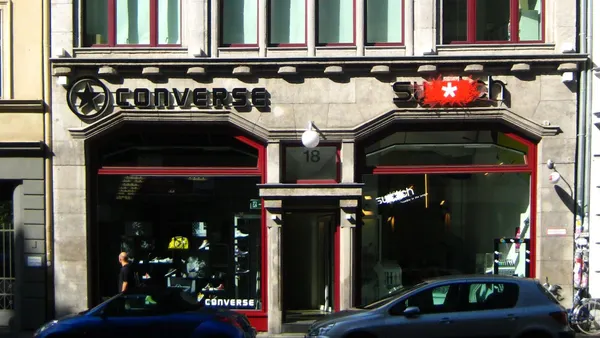Dive Brief:
-
Off-price retailers are likely to remain among the top retail performers over the next 12 to 18 months even as their rate of growth slows — mostly a result of store openings, according to a new report from Moody’s Investors Service emailed to Retail Dive. Moody’s expects operating income among off-price retailers to grow 6.9% this year and 5.4% next, compared to 9.6% last year.
-
Off-price retailers are also expanding into more categories beyond apparel (still the majority of their sales), particularly in home merchandise, another department store staple. The off-price sector’s sales in home grew 9.9% last year, besting their overall growth of 7.8%, Moody’s said.
-
Department stores, meanwhile, may be paying the price, as they rely on outmoded formats and supply chains that aren’t keeping pace with customer demand, according to the report. And their margins are being hammered by the higher costs of e-commerce, Moody’s said. The analysts see a 9.3% operating income decrease for the department store sector this year and another 2.7% decrease in 2018.
Dive Insight:
While many retailers are turning to technology and eye-catching displays to draw in customers — burning money in the process — off-price retailers are demonstrating that plunking full racks of brand-name merchandise at rock-bottom prices is among the most winning strategies in this era of retail.
This, along with the lauded "treasure hunt" vibe to their stores, is pushing the sector forward despite a decidedly meager approach to e-commerce.
Off-price retailers are among those winning in the high-pressure apparel category, according to Moody’s report. TJX, Ross Stores and Burlington will remain dominant in apparel, thanks to their significant scale, flexible purchasing, strong and expanding vendor relations, and adaptable real estate strategies, Moody’s said.
"Off-price retailers continue to outperform other sectors of the U.S. retail industry largely because they offer the kind of lower-cost, higher-value products and shopping experience many consumers are looking for," Moody’s analyst Christina Boni said in an email to Retail Dive. "Off-price stores are far outstripping department stores, which in contrast are still struggling with outmoded formats and supply chains that can’t keep pace with customer demand."
Department stores' own efforts to capitalize on off price’s strengths, such as Nordstrom's Rack stores and Macy's Backstage, isn’t going unnoticed. But the distance to make up might already be too great. "We see little chance of anyone – let alone department stores – overtaking off-price incumbents," Moody's analysts said in the report.
And while off-price has spared itself the costs of e-commerce, department stores essentially have no choice but to meet their customers online, according to Moody’s analysts, who see increased partnerships between online and offline players. Amazon's purchase of Whole Foods, Walmart's acquisition of Jet, Petsmart's combining with Chewy, and Sears' and Kohl’s partnerships with Amazon could be signs of more to come.
But, the analysts warned, retailers weighing their online and offline priorities need to find their equilibrium, noting, for example, that Macy’s estimates that when customers pick up their online orders in stores, their purchase size increases 25%.
"The challenge is figuring out the right balance," Moody’s analysts wrote. "If they close too many [stores], they risk customers losing touch with the store brand and a location where customers can pick up purchases and bring returns. … Nonetheless, the fixed cost structure of a store is impacted negatively as customers shift to online and traffic remains weak."











